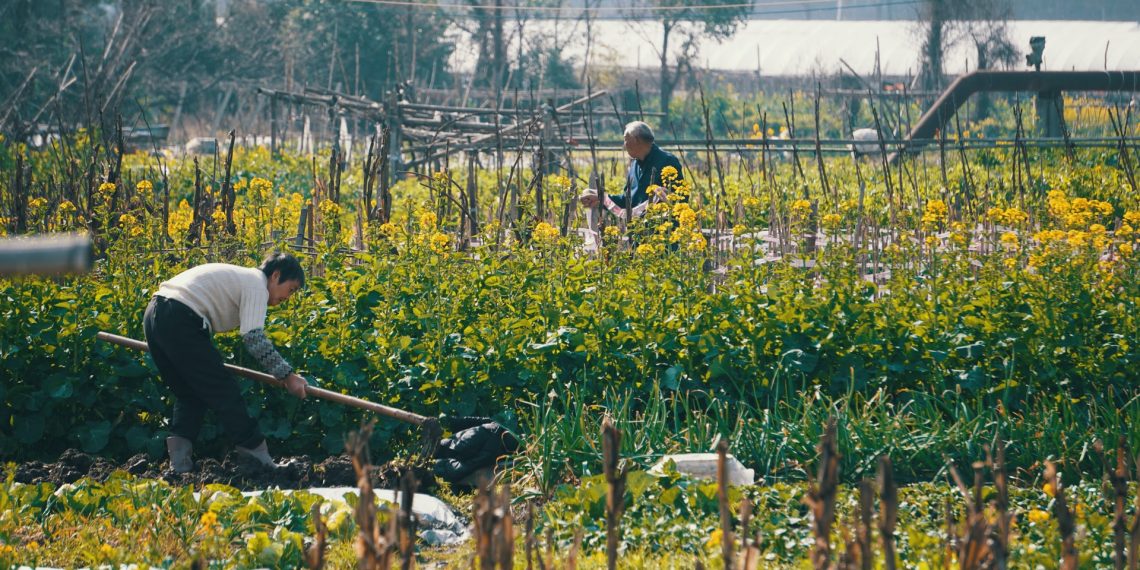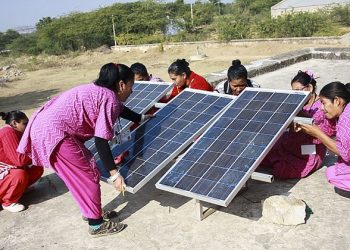From locust swarms in Africa threatening food security, to raging wildfires in Australia, to flooding affecting countries worldwide and more, communities are trying to cope with the effects of climate change. Local leadership, site-specific strategies and knowledge of surrounding environments are essential to building resilience to climate impacts. However, these proven methods are often ignored when external partners get involved, and less than 10% of international climate funds go to local communities most directly impacted by climate change.
The Global Commission on Adaptation’s new paper, “Scaling Local and Community-Based Adaptation,” presents case study evidence that effective climate change adaptation is inherently local. There is no one-size-fits-all technical solution that can replace a contextual focus that puts people’s well-being, needs and aspirations first.
Here are five critical benefits to having local actors lead climate resilience strategies:
1. Effective, Context-Specific Programs
Effective adaptation solutions should manage the uncertainties of climate risk in ways that are tailored to specific locations. There is no universal quick fix to distribute across countries and communities. When adaptation is overseen at the local level, communities can adopt flexible and incremental solutions that accommodate future changes in hazard intensity and frequency.
The Fijian village of Vunidogoloa experienced such frequent and disastrous flooding, coastal erosion and soil salinization that the villagers appealed to the government for relocation assistance. Villagers, local and national governments and the International Labor Organization developed a robust plan that was specific to Vunidogoloa. Working together, they evaluated the natural and spiritual resources the villagers were sacrificing for resettlement, and how their new village could be designed to offset those losses.
The transition included fishponds to offset the villagers’ reduced access to the ocean, introduced more resilient crop varieties and provided coconut copra dryers to generate new livelihood options. Additionally, voluntary social support from local and regional religious organizations was available to help villagers cope with the psychological effects of losing their former home.
2. Higher Social, Environmental and Economic Returns
The benefits of local adaptation outweigh the estimated costs. Avoiding loss and damage from climate stressors saves money, which unlocks economic and social potential for the area — an interplay of co-benefits that the Commission’s 2019 report, “Adapt Now,” boils down to a simple choice: delay and pay, or plan and prosper.

An adaptation strategy in the Hawke’s Bay region of New Zealand will protect local community members from the impacts of storms and coastal erosion, while also preventing substantial economic losses. Photo by Tim Whittaker Photography
The Hawke’s Bay region of New Zealand, frequently inundated by storms and coastal erosion, fortified itself with local adaptation measures to replace losses with returns. Without intervention, the nation stood to lose an estimated $7 million in social outcomes alone within 10 years; within 100 years, losses could have grown exponentially.
To counter this, the district and city council partnered with Tangata Whenua Indigenous people to develop an adaptation strategy with businesses, asset managers and other community members. The resulting solutions included coastal defense structures for the short- to medium-term, and gradual relocation away from the ocean for the long-term. This will protect the 65% of the population that lives within 5 km of the coast, as well as tourist attractions like renowned wineries and architecture.This transparent and participatory approach has since been recreated across New Zealand for its successful integration of local experience, cultural knowledge and technical expertise.
3. More Equitable Results
Programs that account for regional inequalities can avoid excluding or discriminating against marginalized groups. Encouraging the most vulnerable people to participate in decision-making can make programs more effective for the community as a whole, while prioritizing the needs of the region’s poorest.
This strategy worked in Bangladesh, where a program to enhance the resilience of coastal communities was designed to be accessible to women who cannot travel far from their homes. The program focused on cultivating forests, fish and fruit to restore mangrove forests — which can act as a buffer against storms and flooding — and increase food production. Artificial dikes provided garden beds for fruits, vegetables and timber trees, while their corresponding ditches held aquaculture ponds. Because the ditches and dikes are close to households, many more women had the opportunity to generate food and income, while contributing ecological co-benefits through creating natural sea barriers and minimizing coastal erosion.
4. More Holistic Approaches
Local adaptation solutions are more likely to be effective because communities approach adaptation holistically. They experience the complex relationships between adaptation measures and other development priorities like poverty alleviation, disaster impact reduction and inclusive socioeconomic development, and reflect these connections in their climate solutions.

By channeling food aid toward ecosystem restoration, a program in Ethiopia was able to address climate impacts, food security and women’s empowerment simultaneously. Photo by USAID in Africa/Flickr
In Ethiopia, for example, subsistence farmers in the Kalu Woreda district are extremely vulnerable to climate change impacts like droughts. To address drought-induced food insecurity, the Ethiopian government channeled food aid toward ecosystem restoration to increase productivity. With an early warning weather system, new drought-resistant, high-yield crop varieties and agricultural programming focused on women heads of households, the program was able to address climate impacts, food security and women’s empowerment. Cultivating plants for watershed protection, medicines and biodiesel production added a cross-cutting component to Kalu Woreda’s approach.
5. Amplified Local Knowledge
Local knowledge is a vast and underutilized resource that is more accessible and relevant to programs designed for a specific place. Embedding local knowledge in adaptation measures makes them more inclusive, eases uptake and makes them more sustainable, while boosting communities’ sense of ownership.
For instance, when melting glaciers in Pakistan’s Hunza Valley threatened to flood villages, indigenous knowledge about the region informed a comprehensive community-based monitoring and early warning system. Villagers formed volunteer groups to hike into the mountains to observe the glaciers each month. Their knowledge, combined with new methods of data collection and photographic documentation, allowed for comprehensive monitoring of glacier-fed lakes to improve their flood preparedness.
Local Leadership, Global Impacts
This year, the Global Commission’s Locally Led Action Track and its 28 partner organizations are convening regional grassroots-donor dialogues, publishing research on climate finance reform and working with grassroots networks to get funding to the local level. The Locally Led Action Track aims to position communities and local level actors as leaders entitled to greater inclusion and recognition of their expertise and role in developing sustainable, equitable and effective climate solutions.
Adaptation is a global issue with transboundary implications, but effective action begins at the local level. Local voices and priorities are urgently needed in an honest and long overdue conversation on the systemic causes of vulnerability which prevent more transformative solutions from flourishing. The Locally Led Action Track is working to ensure climate resilience strategies bring local actors into the fold to address these causes and build a more effective path forward, not only for local communities, but for the world at large.



